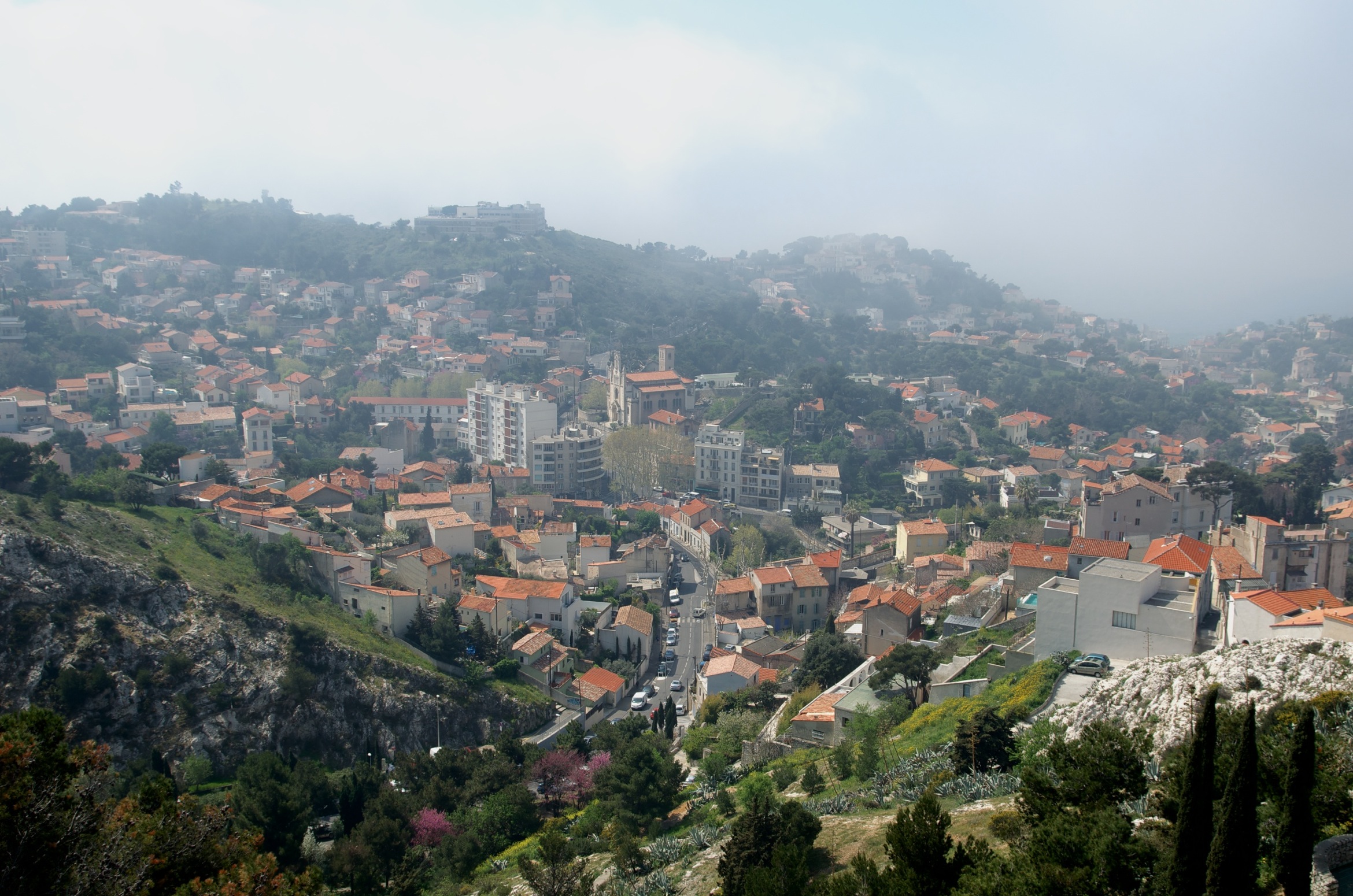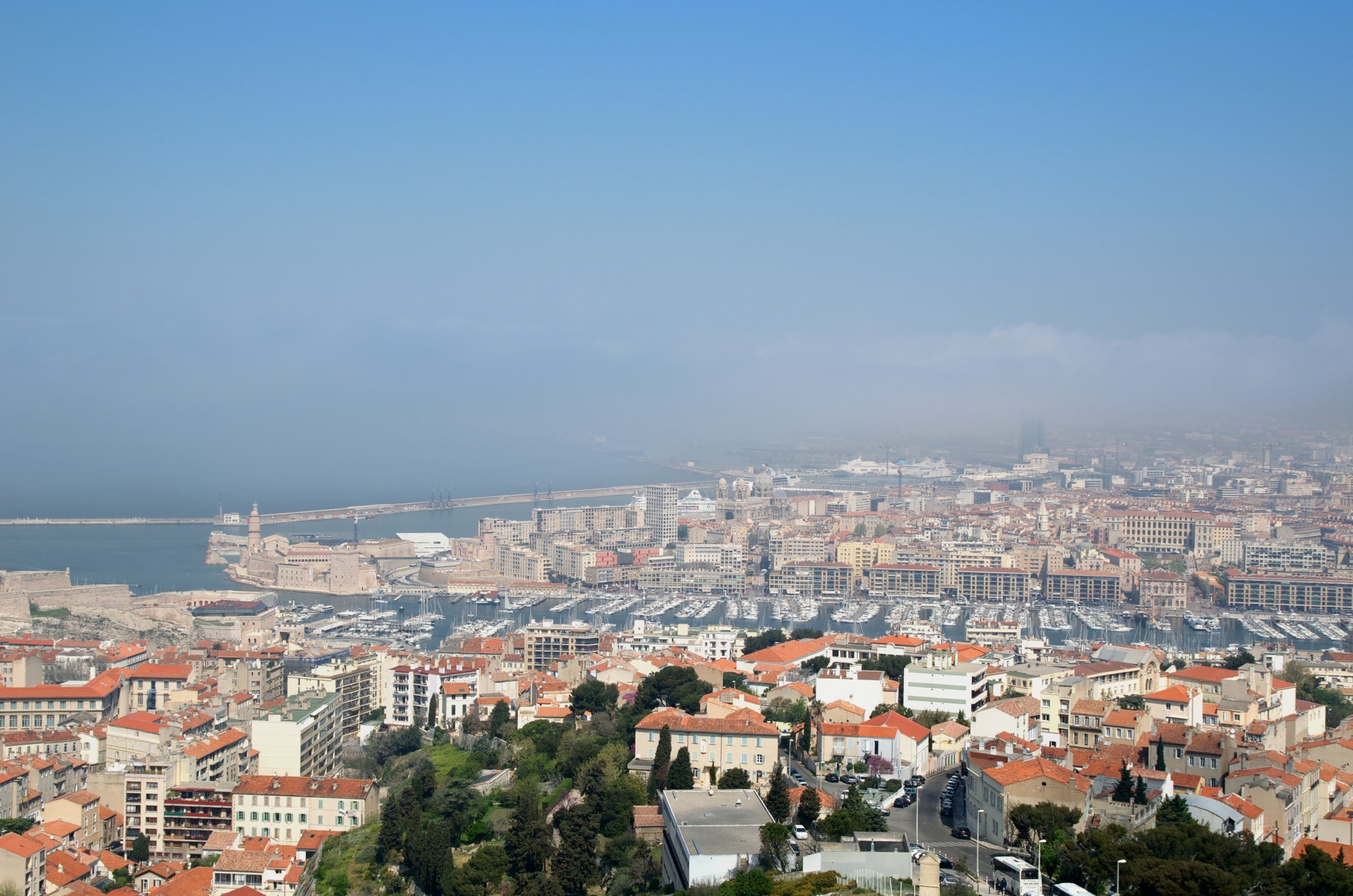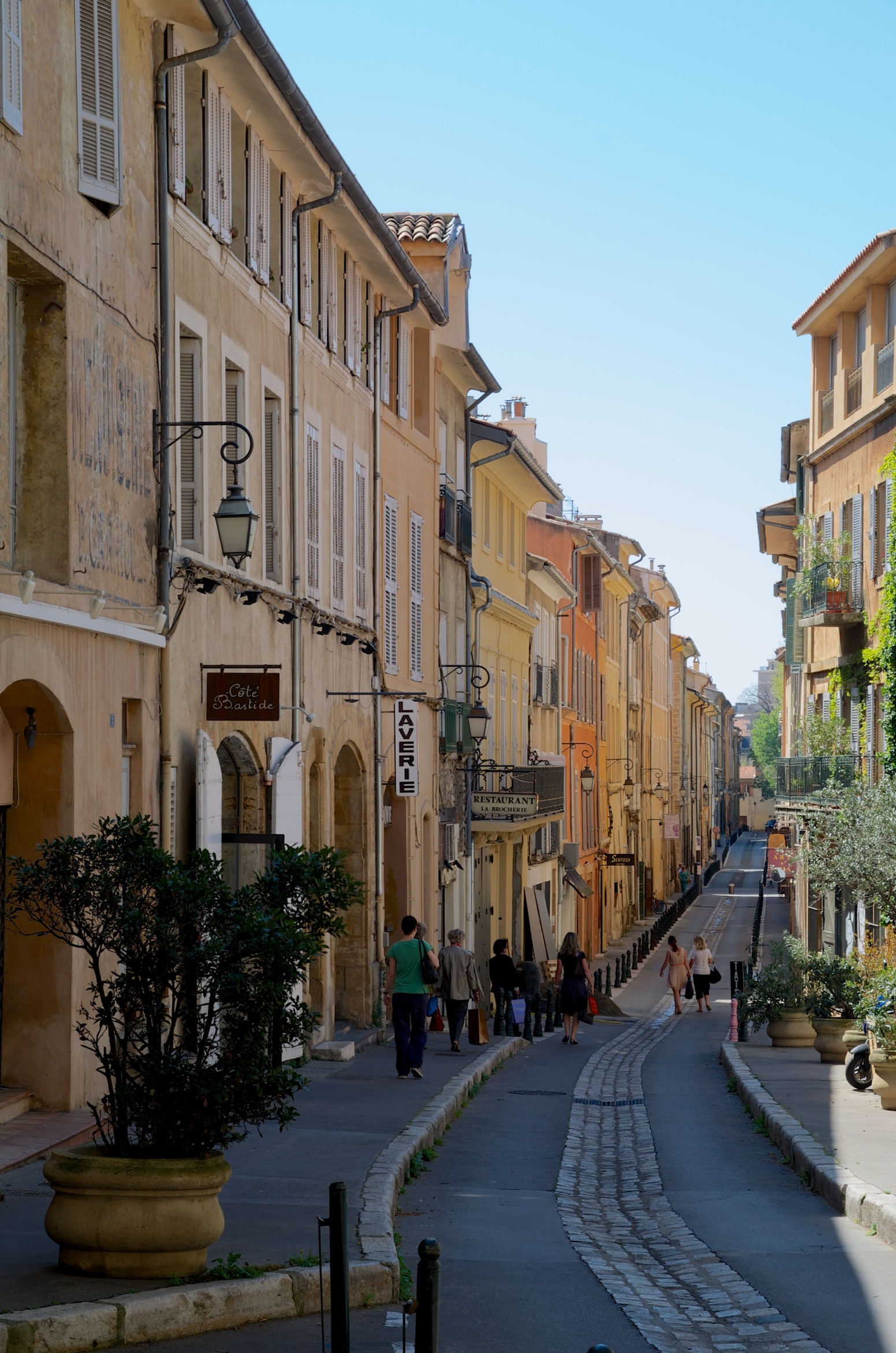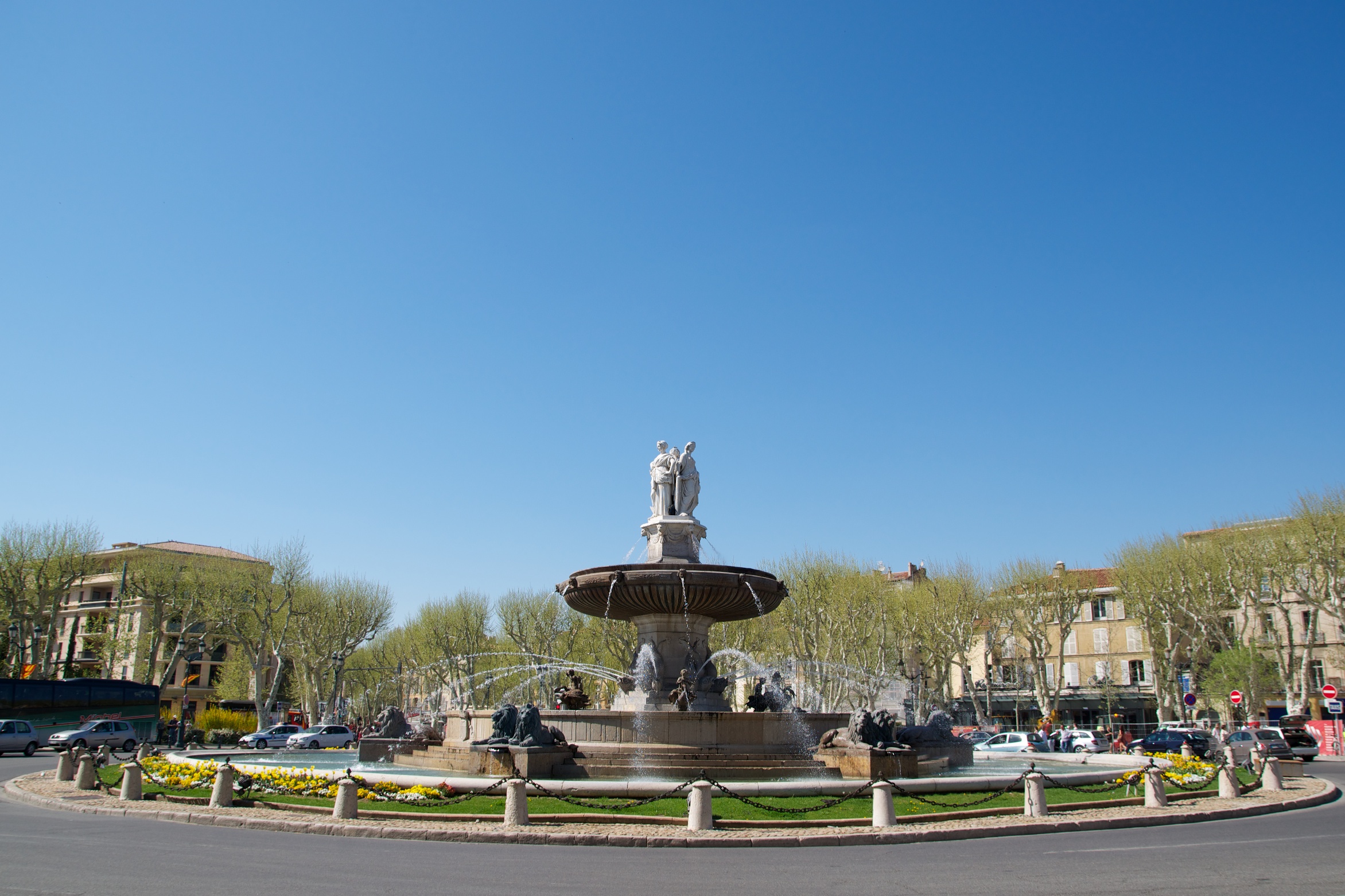Bonjour! A long overdue Port Post is finally here! The first Port Post I did journaling the splendid Mediterranean cruise that my husband Christian and I did in April was about Barcelona. That's right here in case you missed it and are curious. Barcelona was from where our cruise set sail, then on we went to the south of France!
There was only one French stop on our cruise, docking in the Provence region's port city of Toulon. I'm not much of a tour-groupy kind of person, liking to strap on a daypack and wander with a map and a guidebook and explore freely with a pinch of whimsy. But Christian and I decided that booking a cruise-led excursion would be great to kick off the trip, especially because Provence actually did dictate such an organized tour. All of the stops during our cruise, with the exception of Provence and Ephesus, Turkey, were done on our own---no excursions booked. We wanted to do it on our own (and with the help of Rick Steves, of course).
Hacking it on our own, however, wasn't quite doable if we wanted to visit both Marseille and Aix-en-Provence. We could have done Marseille on our own, and maybe buzzed around the rather drab industrial port town of Toulon, but Aix was out of the question without a car. Luckily the cruise offered a Marseille+Aix package, so we eagerly boarded the bus for our first port visit---Marseille!
Marseille, France
The bus was unfortunately filled with quite a few sourpusses, if I may say so (one of many reasons I'm not a fan of large tour groups). There were the two darling southern ladies (I'm guessing by their accent they were from Georgia) seated behind us on the hour-and-a-half trip from Toulon to Marseille whose breaths were taken away by the lush gardens and landscapes whizzing by---appreciative and eager to start their fabulous trip! I appreciated that.
There were far too many, however, who complained about the walking, the fact that the French spoke oh...uhh...French! and that they'd have to climb a few steps to go see the magnificent hill-top church of Marseille, Notre-Dame de la Garde. Then, when they did actually climb the steps, they complained about there being a mass on a Thursday afternoon, saying that that's unheard of. Once we were able to snake our way past the complaining bunches, boy were we overwhelmed by the beauty of Marseille's church and the city's landscape!
Notre-Dame de la Garde (Our Lady of the Guard) is perched up on the highest hill of Marseille, at 160 meters. One look at it and you know it's got Byzantine influences (with neo-Romanesque touches) because of its bold stripes and color and the beautiful golden mosaics everywhere! Because there was a mass going on we were only able to take a brief peek inside (plus it's always about time-time-time with big tour groups), but the sea certainly plays an influential role in the city. There were sailboats hanging all over from the church's ceiling. I've never seen that and it added such a unique charm.
Though our taste of the oldest French city, a seedy harbor town packed with immigrants, over 800,000 people, and a tried-and-true melting pot of cultures, foods, and languages, was small, it was delightful! We had a simple lunch in the old town/port (Vieux Port) and I managed to pick up some lavender soap, while Christian snagged up a pain au chocolat and snapped some photos. A brief stroll along La Canebière, the main drag of Marseille and a glimpse at the converging Arab, African, and French cultures, thatt was our quick look at this fascinating city.
As our bus wound its way from the Vieux Port on towards our next destination, Aix-en-Provence, we got a glimpse of more of the interior of the big city. Marseille is still working on rebuilding their city from the Nazis dynamiting many of their old buildings. Because Marseille lies on the water, it was an ideal place for the French Resistance to flee. With such a high concentration of Resistance, the Nazis made point after point by bombing the old and historical and culturally important buildings, saying that if the Resistance didn't stop resisting, then eventually their culturally rich city would be nothing but rubble. There is still a lot of reconstruction going on today, but they've made significant process in the sixty years they've been working on it.
While Marseille offered the lively immigrant+French fusion that was fascinating, I was very eager to hop over to Aix-en-Provence. How many of us have dreamt about not just visiting this slice of paradise, but throwing open a rickety pair of old doors, stepping out onto the sun-kissed balcony, and settling down with a good book and a mug of tea in your lovely home, Peter Mayle style, perhaps? Yes, Aix is charming in every way possible and I was so excited to pull into town.
Aix-en-Provence, France
This is the most pristine, manicured, and charming town I have ever visited. As dear as our sweet 'n petite French tour guide was, I grabbed Christian's hand and decided to lead our own tour via Rick Steves for the hour-and-a-half we had in this picturesque town. There was a macaron (macaroon) shop I just had to visit! We just needed to go to the oldest patisserie in Aix, Maison Béchard. Oh, and of course we needed to stroll up and down the main street, Cours Mirabeau, and take in the atmosphere of locals sipping espressos in café, paging through newspapers, walking dogs, pushing prams, and enjoying the sun as they walked the small and cobbled, winding streets.
Christian and I were enjoying getting twisted around in a neighborhood off to the right of the Mirabeau in the Mazarin Quarter when two older French gentlemen began to speak to us in French. Wearing glazed expressions on our faces, they at last asked if we spoke French. When they asked if we spoke German, on came the conversation! Evidently the gentlemen were joking with us as Christian snapped photos, saying that he got them in the shot and now our photo's ruined. "We don't look so good anymore," one well-wrinkled man who'd probably spent his entire life under the lovely sunshine of Aix, said. "You need to take the photo again now that we're out of it. Much better then." Christian laughed and joked that he took the picture because they were in it they looked so good.
Though it was an absolutely simple exchange of chuckles and words, this is one of the reasons I love getting off that beaten path, breaking free from the tour group, and doing your own thing. The gentlemen were so kind, explaining in German, after our round of joking, how the church up ahead was closed, and the art exhibit would be on hold for vacation for another two weeks. Just so jolly and warm-hearted. We bid one another Aufwiedersehen and went along our merry way, snapping photos here and there, and sometimes even capturing an elderly couple or old friends in the foreground. Aix-en-Provence in its natural and charming state.
Unfortunately the visit to Aix was much too short, but that's how it always is in places that take your breath away. As I nibbled on one of the macarons we picked up at the charming shop, Brunet Chocolatier (the violet-flavored one and simple vanilla were my favorites), we made our relaxed journey back to the awaiting bus. If there's one place I want to revisit from our trip it'd have to be Aix. Okay, okay, probably also Tuscany so we can hit up Florence, revisit Lucca, and give Pisa a proper visit...and then the Greek islands need more time...and Venice was so romantic... But Aix-en-Provence is a special paradise---truly fairytale-like with kind people, delightful weather, and a feast for the eyes with its flower-box windowsills and pots of lavender everywhere (not to mention a feast for the stomach with so many French tasties!).
The long bus ride back to Toulon was made less sad (Aix'll do that to you when you leave) by the plethora of pastisserie cakes, rolls, and pain au chocolats the intoxicating lavender soap and herbs I kept bringing to my nose, curling my lips into a smile, and, of course, those darn tasty macarons! It was also an entertaining ride thanks to a ton of information from our sweet tour guide. So to ease myself out of this Port Post about France's gorgeous region of Provence, here are some fascinating tidbits of info I learned.
Provence, France
Provence comes from the Romans, who deemed it provincia nostra (meaning "our province"), since it was the first bit of land they conquered outside of Italy. Actual vestiges of Hadrian's Wall still remain today. We didn't see any ruins, but I'll believe the tour guide. :) Artist Paul Cézanne said in the 1870s that being born in Provence and living there, as he, was to be spoiled. There is Provence, which is the world, and then there's the rest of the world, which is nothing. Can't say I agree with him, but I definitely see the point he was trying to make!
The buildings in Provence are primarily made of limestone (which I find to be so beautiful) because it's, well, everywhere! The West beaches of the south of France (Provence) have a lot of sand and limestone because of the Rhône. The East beaches, however, like in Nice and Cannes, are covered with rocks. I thought it peculiar the beaches had slate-colored and smooth rocks when I visited Nice in 2005. I'd brought my beach towel, none the wiser, thinking I'd pull a day at the beach much like back home when in Hunnington, California, all lounging on the soft, warm sound. Apparently the mountains and hills drop stones onto the Eastern beaches of France.
While the charming Provence countryside with its endless fields of lavender piques many Americans' interests, we all know how amazing the food and wine are! Provence is called the Garden of France because you can grow just about any fruit and vegetable. Thought its soil may not be prime for lengthy wine roots, it sure is magical for herbs and produce.
Fish and seafood are leaders in the Provençal cuisine, while beef is usually imported. This is music to my ears as a vegetarian and lover of garlic (they love their garlic in Provence) and vegetables slathered in herbs.
Olive oil is used in about 99% of the oil-needed dishes, and guess what? They don't get it from Italy! Spain is actually the number one olive oil producer, and even the Italians admit they'll import the emerald goodness from their western neighbors. With garlic, an array of herbs, a medley of vegetables, and lots of cold pressed olive oil, with a touch of fish and seafood, the Provençal cuisine is a light one. And with 300+ days of sun it's probably a good thing.
Temperatures can climb as high as 40 degrees Celsius (104 Fahrenheit) in the region, and with so much sun it makes for great wine. Vines in Provence are short because of the wind, and with poor soil and not much land, vines can't have long roots. So they're planted, cut, and planted again, keeping the roots short to avoid the vines growing too tall. If they're too tall they'll be broken by the wind and, well, there goes that vineyard! So if you've ever wondered why the vineyards of Provence are all stubby-like, there you have it. If you want to see tall-as-a-human vines, no joke, then trek on over to the Alsace region, where the soil is rich, the roots are shallow, the sun isn't so present, and the winds are low. Isn't wine fascinating? I love learning about how it's created and cared for just as much as I enjoy drinking it. All right, almost as much. :)
Now that I've probably whetted your appetite for a warm baguette soaked in olive oil and sprinkles of herbs, or maybe a glass of summer rosé, or even a petite macarons or, you're probably ready to pack your bags and head to Provence! As much as I'd love to hop a flight and do just that, I think I'll crack open Peter Mayle's A Year in Provence. Shall we?
Until my next Port Post, au revoir and...
Happy Reading!
















